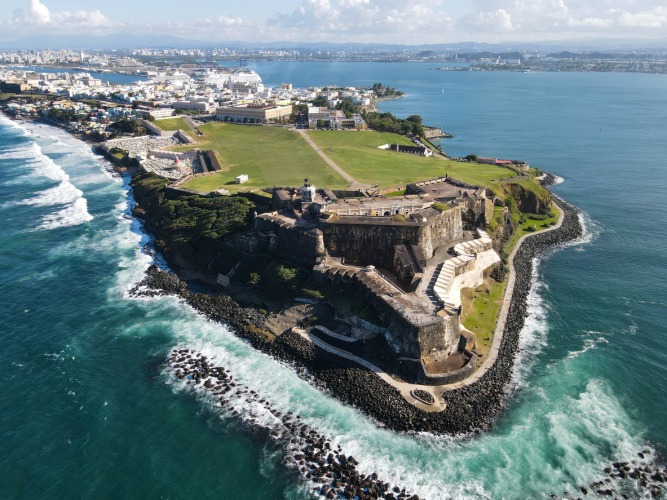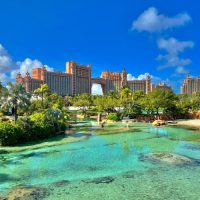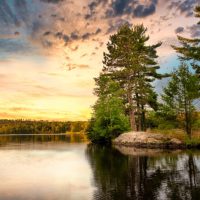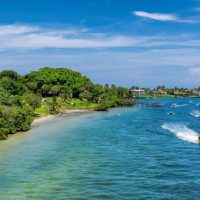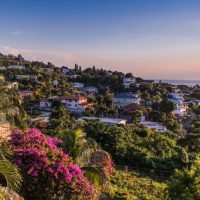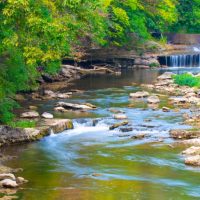Even though Puerto Rico is a part of the United States, it is not considered a state but instead a commonwealth.
Many tourists who visit here treat Puerto Rico as its own country.
Puerto Rico is full of caves, beaches, and much more.
But besides the amazing beauty that Puerto Rico has to offer, there are also nearly 11 different species of snakes that reside on the island.
Only one out of the 11 species of snakes is venomous.
Continue reading to learn more about what these snake species are and stay safe while enjoying nature in Puerto Rico.
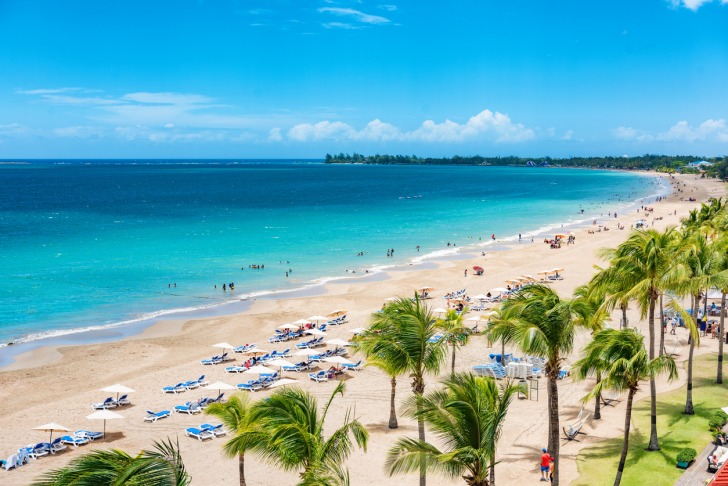
Contents
So, are there snakes in Puerto Rico?
Puerto Rico does have nearly 11 different species of snakes.
Out of the 11 species of snakes, only one is considered to be harmful to humans if bitten.
This snake is known as the Puerto Rican racer.
Some of the snakes that exist in Puerto Rico include:
- Puerto Rican Boa
- Flat-headed Blindsnake
- Richard’s Blind Snake
- Puerto Rican Wetland Blindsnake
- Blind Snake
- Grant’s Blind Snake
- Mona Blind Snake
- Coastal Blindsnake
- Mona Boa
- Puerto Rican Racer
- Puerto Rican Garden Snake
Snake Species in Puerto Rico
Here is everything you need to know about the 11 different types of snake species found in Puerto Rico:
1. Puerto Rican Racer
The Puerto Rican Racer is known as the only snake species in the area to be venomous.
However, even still, the snake’s venom is not strong.
They have sleek bodies and can grow to be anywhere between 3 and 4 feet.
They have a very distinct appearance and a narrow neck.
They can range in color from olive green to brown.
2. Puerto Rican Boa
The Puerto Rican boa is another snake species that can grow to 6.5 feet.
It is characterized as having a muscular body.
It can also range in color from brown to red to even orange.
They are known as one of the larger snake species in Puerto Rico.
3. Coastal Blindsnake
The coastal blindsnake can grow to be 6.5 inches in length.
They are characterized by having slender bodies and dark brown to black skin.
They are found near rocky shores, beaches, and forests.
They are not venomous.
4. Richard’s Blindsnake
Richard’s blindsnakes are small snakes that can be found in forests throughout Puerto Rico.
They can grow to be anywhere between 4 and 6 inches long.
They have small eyes and big heads.
They are unique and can lift things that are twice their weight.
5. Flat-headed Blind Snake
The flat-headed blind snake is also known as the Puerto Rican worm snake.
It’s small and has a flat head.
It mostly feeds on insects and worms that live in the ground.
They can be found on trees, rocks, and on the ground.
6. Puerto Rican Wetlands Blindsnake
Puerto Rican wetlands blindsnakes are overall dark brown and have white spots on the mouth.
They can grow to be anywhere between 7 and 9 inches long.
They are often found in ant or termite nests throughout Puerto Rico.
7. Grant’s Blind Snake
The Grant’s blind snake is also known as the Grant’s worm snake.
They can grow to be 8 inches long.
They are typically found in forests in the southwestern part of Puerto Rico.
8. Mona Blind Snake
Mona blind snakes are harmless snakes that are also found in Puerto Rico.
They are another type of blind worm snake and are considered endangered.
They can only grow to be about 10 inches long and can be brown or tan.
Most of their time is spent under logs or rocks.
9. Mona Boa
The Mona Boa snake is also found in Puerto Rico and is non-venomous.
It can grow to be about 1 meter in length.
The colors of the Mona Boa snake may vary depending on its maturity.
Typically, they are light brown with dark brown markings.
10. Puerto Rican Garden Snake
The Puerto Rican garden snake can grow to be anywhere between 12 and 14 inches.
They are typically found under rocks, in leaf litter, and even on dead branches and logs.
They mainly feed on larger lizards and anoles.
They have slender, pencil-like bodies.
11. Blind Snake
Blind snakes are also tiny snakes that grow to be no more than 10 inches long.
You can find them under rocks, logs, inside caves, and even under dirt.
They are characterized by having brown or pink bodies with white spots.
Is it Safe to Go on a Trek in Puerto Rico?
Many of the hiking trails in Puerto Rico are perfect for the entire family, children included.
However, even though it’s safe to hike in Puerto Rico, you must remember to wear appropriate clothing and shoes.
For example, wearing long sleeves while hiking is highly recommended.
Puerto Rico has plenty of beautiful trails and forests.
Many of the trails, especially the ones in San Juan, have historical sightings and are ideal for those at any skill level.
Be sure to wear sturdy footwear that will give you a good grip, as there is plenty of rugged terrain in Puerto Rico.
Be aware of other animals and insects while hiking.
The rainforest is full of reptiles, birds, flannel moths, giant tree snails, and Puerto Rican tarantulas.
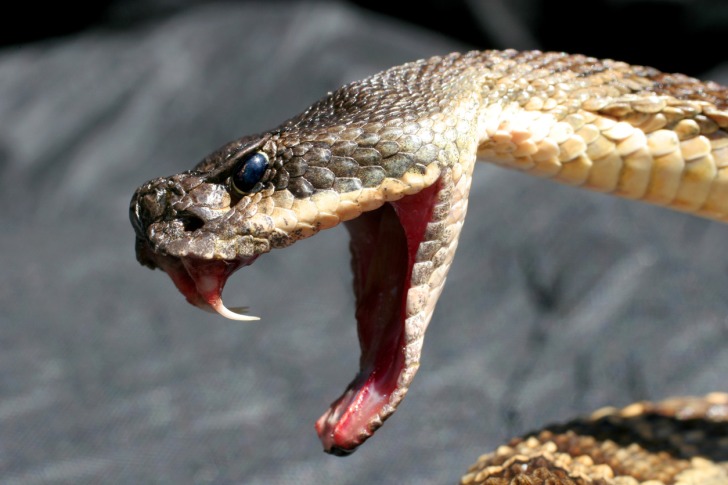
Interesting Snake Facts in Puerto Rico
Here are some interesting facts about snake species in Puerto Rico:
The Puerto Rican boa snake can be found either on the ground or in trees.
It is also considered to be an aggressive snake.
There are only three families of snakes that live in Puerto Rico.
The largest native species of snake in Puerto Rico is the Puerto Rican boa.
It is also the only known boa snake species that can catch bats in mid-air.
The Puerto Rican racer snake is the second-largest snake on the island.
It is venomous, and its bite can be poisonous.
3 Safety Tips for Exploring Nature in Puerto Rico
Here are three safety tips to keep in mind while enjoying nature in Puerto Rico:
- Never touch animals or plants. Avoid touching plants or wildlife, as it will keep both you and them protected. If you notice something beautiful while walking, it doesn’t hurt to snap a photo.
- Wear cotton clothing. Not only should you wear cotton clothing, but it should be long and loose. This will help keep you protected against mosquitoes. It will also protect you if you brush up against plants.
- Pack a poncho. Don’t forget to pack a poncho during your hike in Puerto Rico. Puerto Rico sees a lot of rain, and often. The best way to make sure you’re prepared is to have the necessary rain attire ready.
Summary
Puerto Rico has 11 different species of snakes.
Out of the eleven, only one is considered venomous and mildly poisonous to humans.
That snake is the Puerto Rican racer.
These snakes can grow as long as 4 feet.
In addition, those looking to enjoy nature in Puerto Rico can do so safely by taking the necessary precautions.
Children are also welcome on many of the trails.
Wearing the necessary clothing and footwear is highly recommended, as the terrain in Puerto Rico is bumpy.
Besides snakes, you’ll see plenty of other insects, reptiles, and animals while enjoying nature.
The best way to protect yourself from wildlife is to avoid getting close to them and enjoy their beauty from a distance.
Puerto Rico Safety Overview
READ THE FULL REPORT: Puerto Rico Safety Review
Safety Index: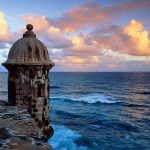
- OVERALL RISK: MEDIUM
- TRANSPORT & TAXIS RISK: MEDIUM
- PICKPOCKETS RISK: MEDIUM
- NATURAL DISASTERS RISK: MEDIUM
- MUGGING RISK: MEDIUM
- TERRORISM RISK: LOW
- SCAMS RISK: MEDIUM
- WOMEN TRAVELERS RISK: LOW
Frequently Asked Questions
What are some symptoms of a snake bite in humans?
The symptoms of a snake bite may vary.
It all depends on the type of snake that bites you.
However, common symptoms include:
- Vomiting, nausea, or diarrhea
- Puncture marks at the location of the bite
- Swelling, redness, bleeding, or even bruising
- Vision changes
- Rapid heart rate
- Muscle twitching
How many people are bitten by snakes each year?
Approximately 5.4 million people around the world are bitten by snakes every year.
Between 81,140 and 137,880 people succumb to their snake bite injuries per year.
What state in the U.S. has the most snakes?
Texas has the most snakes in the entire country.
However, if you are talking about the state that has the most venomous snakes, Arizona tops the list.
